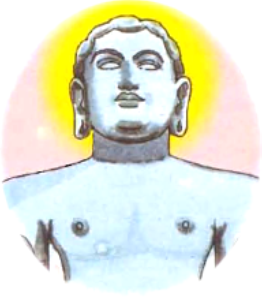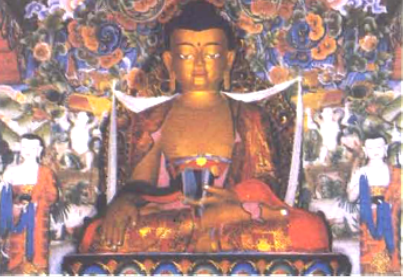Introduction
- Books Name
- CBSE Class 6 Social Science Book
- Publication
- Param Publication
- Course
- CBSE Class 6
- Subject
- Social Science
* THE UPANISHADS
The Upanishads, which are actually a part of the Vedic literature, lay emphasis on simple life and true actions.
There are about 300 Upanishads but the most famous among them are Isa, Katha, Taittiriya, Aitareya, Chandogya, Brahadaranyaka etc.
* Causes of the Rise of jainism and buddhism
The simple varna system had degenerated into a rigid caste system. The high-caste Hindus developed hatred for the low-caste people, most of whom were branded as Shudras or untouchables who were subjected to abject humiliation, suffering and misery.
It was during this period of religious degeneration and social persecution of the common people that two great teachers, Mahavira Vardhamana and Gautama the Buddha, preached to them the path of love, kindness and piety. They denounced the rigidity of the caste system and condemned the practice of untouchability.
Jainism
- Books Name
- CBSE Class 6 Social Science Book
- Publication
- Param Publication
- Course
- CBSE Class 6
- Subject
- Social Science
* Jainism
Life of Mahavira

Vardhamana, popularly known as Mahavira, is generally regarded as the founder of jainism in India. According to the jains, Mahavira was the twenty fourth and the last Tirthankara (or saint with divine power of granting salvation to his disciples). Their first Tirthankara was Rishabhadeva and the twenty third Tirthankara was Parshvanath, the son of king Ashvasena of Benaras.
But it was Mahavira who is generally regarded as the real founder of jainism. About his early life, however, much information is not available. He was born in the 6th century B.C. at Kundagram, near Vaishali (in modern Bihar). His father's name was Siddhartha who was the head of his Kshatriya tribe, Janatrika. His mother, Trishla, was the sister of the famous lichchhavi chieftain, Chetaka, whose daughter was married to Bimbisara, the renowned king of Magadha. Thus, Vardhamana belonged to a high aristocratic family.
* Main Teachings of Jainism
What Mahavira taught formed the teachings of Jainism. These are the following :
Ahimsa – The first and foremost principle of Jainism was Ahimsa or non-injury to anyone. This principle was against the rising number of animal sacrifices in the yajnas.
Severe Penance and Self-Sacrifice – Jainism believed in curbing one's desires and impulses by undertaking severe penance. To die during penance was considered as a great virtue.
No Faith in Yajnas, Sacrifices and Ritualism – Jainism was a sort of revolt against the superiority of the Brahmans and their yajnas, sacrifices and useless rituals.
Worship of Twenty – Four Tirthankaras Instead of respecting the Brahmans and worshipping their gods, the jains began to worship their own Tirthankaras.
No Faith in God – Mahavira did not believe in the existence of God, the creator and preserver of the universe.
No Faith in the Caste – System jainism strikes a deadly blow at the caste-system and all sorts of class distinctions. It preaches the equality of human beings.
A jain Bhadrabahu founded the Digambara Sect.
Attainment of Salvation – The Jains like the Hindus believe that the chief aim of man is to attain salvation (Moksha) or freedom the cycles of birth and rebirth. This salvation can be achieved by following the three Jewels (or Triratnas) of right faith, right knowledge and right conduct.
Next life and the Karma Theory – The Jains too, like the Hindus and the Buddists, believe in next life and trasmigration of soul.
Buddhism
- Books Name
- CBSE Class 6 Social Science Book
- Publication
- Param Publication
- Course
- CBSE Class 6
- Subject
- Social Science
* Buddhism

Life of the Buddha – Lord Buddha also came from a royal family. His father, Shuddhodana, was the King of Kapilvastu. Buddha was born in the 6th century B.C. at a place called the Lumbini Garden, when his mother, Mahamaya, was returning from her mother's house. She died when the prince was hardly seven days old.
It is said that Siddhartha (that was the real name of Buddha) took no interest in worldly affairs and spent long hours in meditation. Therefore, his royal father, who wanted to divert his attention to the material joys of the world, arranged his marriage with a beautiful princess, Yashodhara.
* The Great Renunciation
All comforts of palace-life and the joys of material bliss could not affect the prince much. One day, driving with this charioteer, Channa, he came across a sick man, then an old man with his back bent, and still another day, he saw the agony of death. All these sights made him sad and he clamoured to find the means for salvation. He felt like a bird in a cage. So, one night when his wife was asleep, he slipped away from his royal bedroom and renounced the world. He was then only 29 years old. This event is called as 'the Great Renunciation.'
* Preaching Work
Buddha delivered his first sermon in the 'Deer Park', Sarnath, near Benaras and converted five disciples to Buddhism. This very event is known as "Dharma Chakra Pravartana" or "Turning of the Wheel of Law" in the history of Buddhism. The rest of his life, about 45 years, Buddha spent in preaching his religion moving from one part of the country to another.
* Teaching of Lord buddha
Four Noble Truths and Eight-Fold Path - According to Buddha, there are Four Noble Truths : (i) This world is full is misery and sorrow; (ii) The main cause of all this misery and sorrow is desire; (iii) Misery and sorrow can be ended by killing the desire (iv) This desire can be suppresed or killed by following the Eight-fold Path. The Eight-fold Path, which every Buddhist is expected to follows, consists of the following eight principles which were based on high morals and righteous conduct :
(1) Right Belief , (2) Right Thought, (3) Right speech, (4) Right Action, (5) Right living , (6) Right Effort, (7) Right Recollection, (8) Right Meditation.
He avoided the extremes and followed the middle path.
Ahimsa – Like Mahavira, Buddha laid great emphasis on Ahimsa or non-injury to animals.
Nirvana – According to Buddha, the chief aim of man's life should be the attainment of Nirvana or the 'Ultimate Salvation', which can be achieved only by following the eight-fold path of virtuous living.
Faith in the Theory of Karma – Like the Hindus and Jains, the Buddha too believed in the theory of Karma. He said that everybody has to reap the fruits of the seeds he has sown.
No Faith in Yajnas, Sacrifices and Ritualism – Like Mahavira, Buddha had no faith in yajnas and costly sacrifices where animals were sacrificed in large numbers.
No Faith in the Caste-System – He had no faith in the caste system and treated all men as equal. He embraced even the humblest among the low-caste into his fold.
Silence over the Existence of God – The Buddha was silent over the existence of God as he wanted to keep his new faith above controversy.
Buddhism (Part -2)
- Books Name
- CBSE Class 6 Social Science Book
- Publication
- Param Publication
- Course
- CBSE Class 6
- Subject
- Social Science
* The Sangha
Both Mahavira and the Buddha held the view that those who left their homes could gain the true knowledge. They formed the Sangha, or an association for those who had left their homes.
The rules for the Buddhist Sangha were compiled in a book called the Vinaya Pitaka. From this we come to know that the Buddha had two kinds of disciples – monks (Bhikshus) and lay worshippers (Upasikas). The former were organised in Sanghas to popularise Buddhism and spread its teachings among the people in simple language.
* The Monasteries
The permanent shelters of the monks, both Jains and Buddhists, were known as monasteries or viharas. The land for these monasteries were donated by the rich people or the kings. The local people offered food, clothings etc. to the monks and the nuns. In return they taught the people.
* Spread of Buddhism and its Causes
Some of the causes that led to the popularity of Buddhism in India and other countries were as given below :
1. It was a simple religion as it laid no stress on useless rituals and costly sacrifices.
2. The Buddha and his monks preached in the simple language of the people which everybody could easily understand.
3. Buddhism did not believe in the practice of dividing the people into high and low castes. It preached equality of all men.
4. The ancient Indian universities of Taxila, Nalanda and Vikramshila became great seats of Buddhist learning. Scholars from India and abroad came there not only to learn but also to supplement the knowledge of others.
5. Above all, the royal patronage that Buddhism was able to acquire in India and abroad, made it popular. In India, kings like Ashoka, Kanishka and Harsha did a great job in carrying the message of the Buddha to other place.
* Decline of Buddhism in India
Gradually, some evil practices crept into the religion of the Buddha as well. (i) With the passage of time, the Buddhist monks accumulated wealth and began to lead a degenerated life (ii) The split in Buddhism – Hinayanism and Mahayanism – Also had an evil effect. (iii) Vedic Hinduism also tried to rid itself of its weaknesses and ultimately there was a strong revival of the Vedantic Hinduism under the leadership of Adi Shankaracharya, who established the supremacy of the old Vedic religion in India.
* Buddhism and jainism : A comparison
Points of Similarity – Both Buddhism and Jainism were reform movements. They were started to reform the Hindu religion. Both were in favour of Ahimsa or non-injury to animals. Both condemned the caste-system and were against the Vedas and Sanskrit. Both of them challenged the superiority of the Brahmans.
Points of Difference – While the Buddha was silent about the existence of God, Mahavira denied his existence. While Jainism laid much stress on hard penance, Buddhism followed the Middle Path. Buddhism does not believe in remaining naked as some of the followers of Jainism believe.
* Effects and Contribution of Buddhism
Buddhism influenced almost every aspect of Indian life. It promoted the feeling of peace and many projects for the welfare of the people were undertaken. By opposing the rigidity of the castesystem, it promoted the feelings of unity and brotherhood. In the cultural field, Buddhism contributed the most. Many beautiful temples, Stupas, Viharas and Chaityas were built. For the first time, the life-size statues of any deity, i.e., the Buddha, were made and worshipped in India. The Buddhist monasteries became great centres 'of learning. Buddhism encouraged the common languages of the people like Pali and Prakit.
In one field, however, Buddhism proved harmful. It killed the martial spirit of the people and thus brought slavery to India.
* Key Words
1. Tirthankara : A Jain teacher with divine powers.
2. Shvetambaras : Jains who put on white cloths.
3. Digambaras : Those Jains who keep themselves naked.
4. Sangha : The religious order of the Buddhists
5. Ahimsa : No injury to living beings.
6. Dhamma : Pali word for Dharma, used by the Buddhists.
7. Nirvana : Salvation of an individual from death and birth.
8. Ashtamarga : Eight-fold path.

 Param Publication
Param Publication
